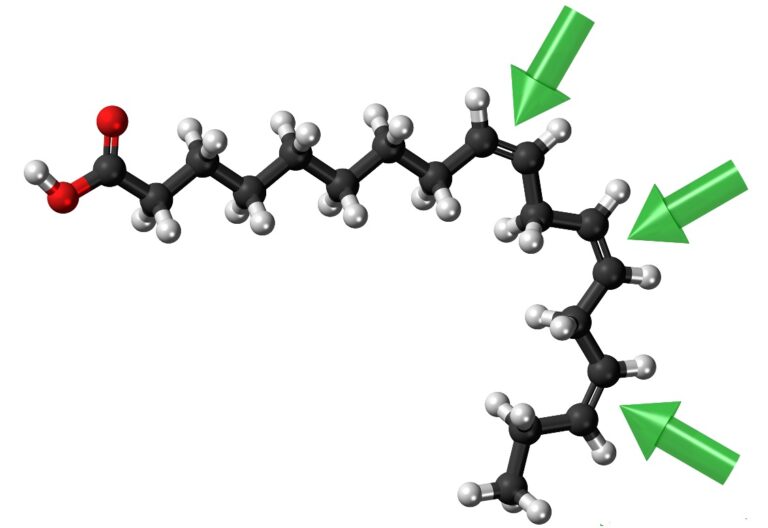
Can we convert plant O3 ALA to the needed EPA/DHA - Or must we get them directly from marine oil supplements?"

Abbreviations:
PUFAs (Polyunsaturated Fatty Acids), incl. the EFAs (Essential Fatty Acids):
Omega 6 (O6)
- LA (linolenic acid)
- GLA (gamma-linolenic acid)
- DGLA (Dihomo-gamma-linolenic)
- AA (Arachidonic acid)
Omega-3 (O3):
- ALA (alpha linolenic acid)
- SDA (stearidonic acid)
- EPA (Eicosapentaenoic acid)
- DHA (Docosahexenoic Acid)
A much debated question . . .
Our cell membranes necessarily contain a supply of ALA, which can be obtained by consuming the fats in such as flaxseed, nuts and seeds.
However, enzymes (Δ6D and Δ5D) in our body are needed to convert and elongate this omega-3 form to its longer carbon chain forms EPA and DHA.
- EPA is needed to produce “calming” eicosanoids (e.g. prostaglandins and leukotrienes) to balance the “call-to-action” eicosanoids.
- DHA is needed to maintain healthy function of the active organs: brain, nerves, eyes, testes.
If ALA was not converted to EPA/DHA, those who don’t eat fish or supplement marine oil would be dead or near dead, since DHA only remains in the body for about a week.
Diet, age, health, genes, other conditions affect conversion enzymes Δ6D and Δ5D
Study results
Study results are mixed, but most concur that ALA converts as far as EPA.
This allows eicosanoids produced from EPA to counter and “calm down” the “call-to-action” prostaglandins, leukotrienes etc. produced from omega-6. Women seem to be able to convert ALA more efficiently than men. Likely controlled by estrogen to ensure Omega-3 supply for her baby during pregnancy. Studies show conversion rate of ALA to DHA is low. Many studies show a conversion rate of ~1% in infants and even less in adults. Few studies demonstrate an increase of DHA in blood or breast milk after several weeks of ALA supplementation. * Omega-3 DPA (Docosapentaenoic Acid) is an intermediate fatty acid between EPA and DHA found mainly in fish oil, seal oil and grass-fed red meat. To explain why some studies produced no DHA – leading expert on fats Dr. Udo Erasmus, points out that many factors affect conversion rate, and that when the brain has sufficient DHA, feedback inhibition prevents further conversion until the DHA is used up, to protect the body from getting too much DHA (E.g. by taking too much DHA-containing fish oil).Confirms conversion of high dose ALA to EPA, but not DHA.
High Ratio Omega 3: Omega 6 intake????































